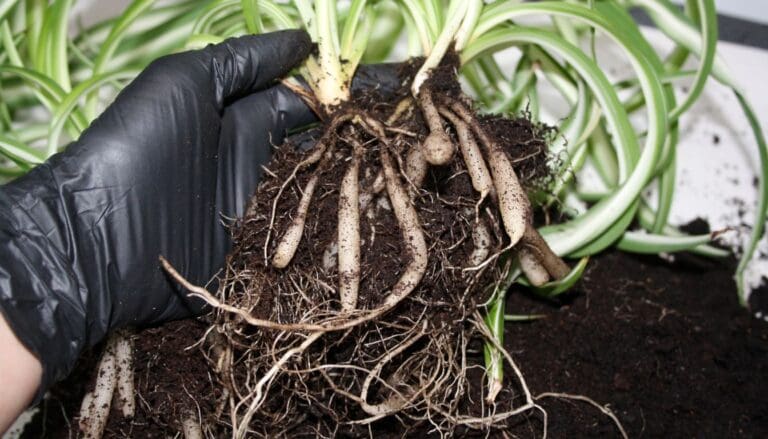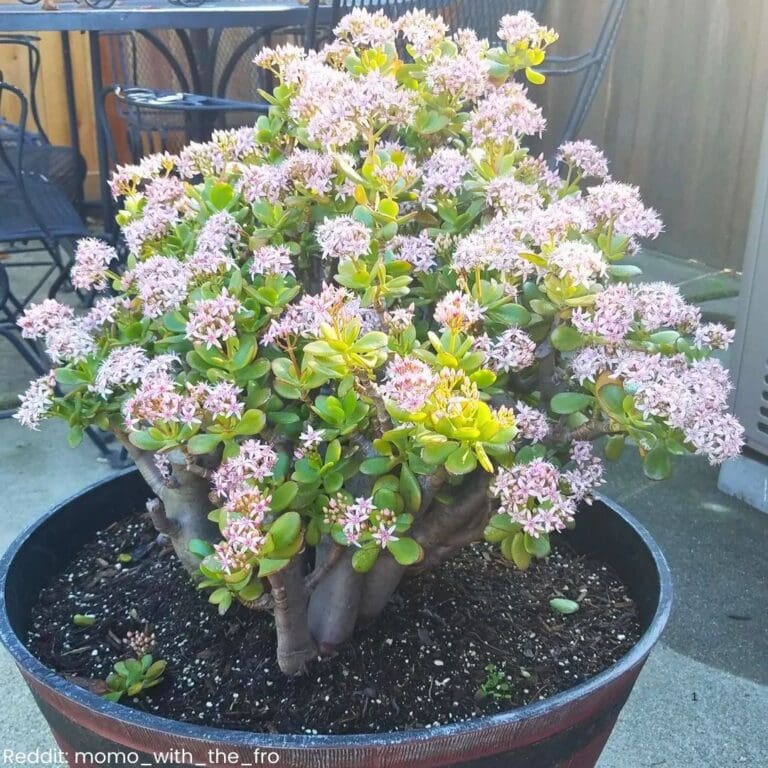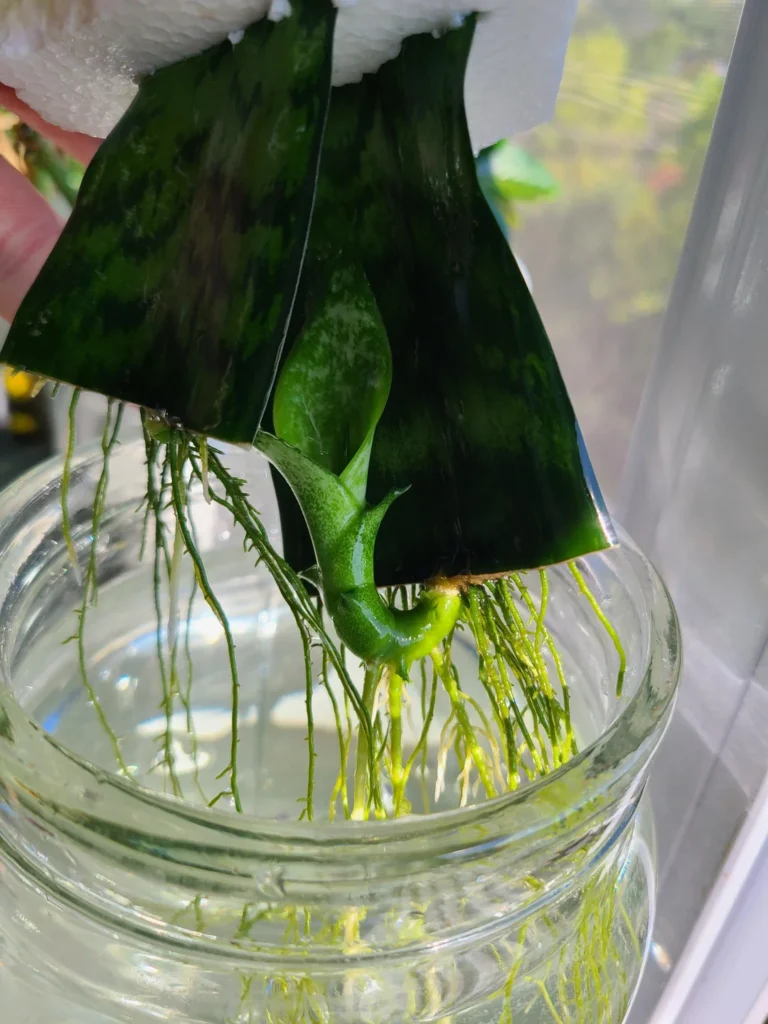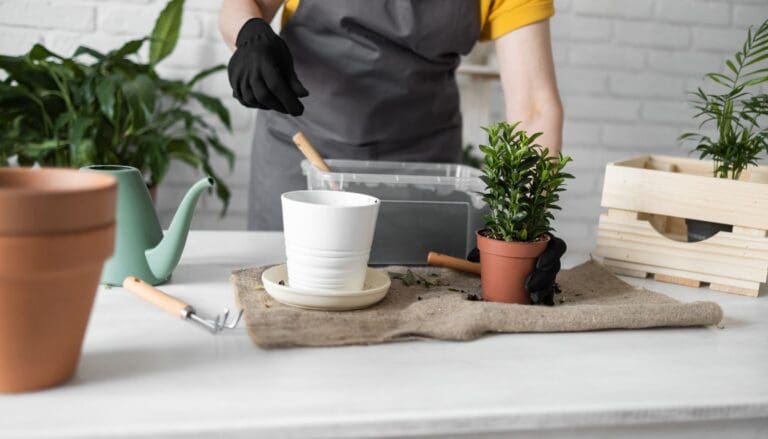3 Things to Stop Doing to Your Plants This Fall for Healthier Growth
Every fall, I notice my plants start to look a little different as the weather changes.
It always makes me wonder if I’m actually helping them out or just getting in their way—who knows, right? Here’s what I’ve picked up.
Turns out, stopping a few common habits can make a real difference for plants this time of year.
I’ve found that just a couple of tweaks can help both my indoor and outdoor plants stay healthy until things warm up again.
Please note: Simplify Plants is reader-supported. As an Amazon Associate, I earn from qualifying purchases made by our readers with no extra cost added to you all! Some links in the post are affiliate links and I get a commission from purchases made through links in the post.
1) Stop overwatering your plants as cooler fall weather reduces their water needs
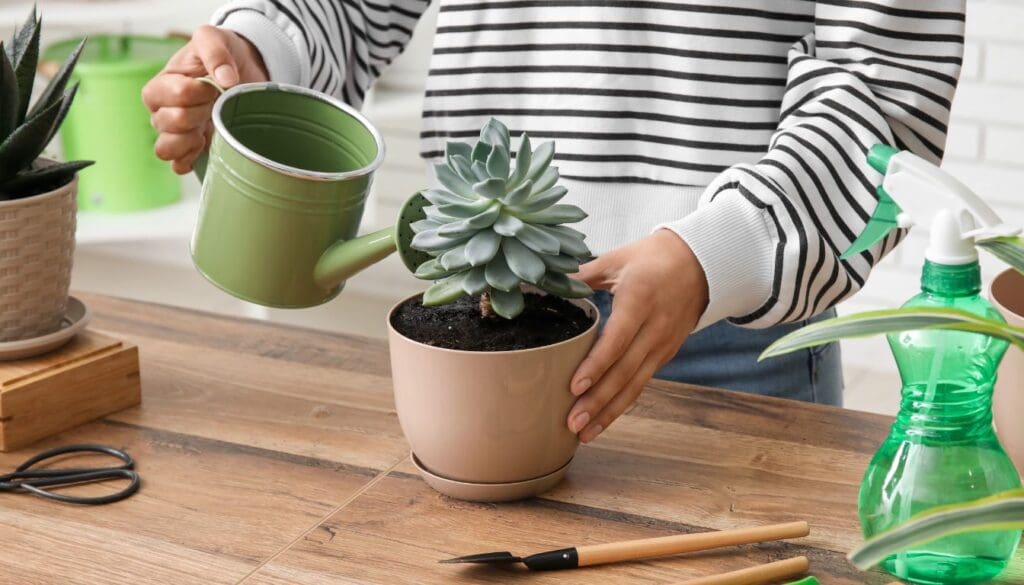
As fall rolls in, plants just don’t need as much water as they did in the heat of summer. Shorter days, weaker sun, and lower temps mean the soil stays damp longer than you’d think.
Too much water can cause root rot. I’ve definitely made that mistake before. Roots need air, and soggy soil just suffocates them.
Now, I check the dirt before I even think about watering. If the top inch is still moist, I hold off. I only water when things feel dry up top. It’s a simple habit, but it saves a lot of trouble.
I’ve also learned to chill out with my watering schedule. In summer, I might water every few days, but by fall, once a week—or less—is usually enough.
When it’s rainy, my outdoor plants barely need anything extra. Overwatering in fall is a sneaky plant killer, so I try to stay alert.
I stick with pots that have decent drainage. Nobody wants water pooling at the bottom—plants included. If it’s rained, I dump out any water sitting in trays under my pots.
For houseplants, less water is definitely better as it gets cooler inside. Wet soil indoors can bring on gnats and mold, and I’m not a fan of either.
I just use my finger to poke around in the soil. It’s quick and tells me what I need to know.
Honestly, in fall, it’s safer to underwater than overdo it. Most plants bounce back from a little dryness, but too much water? That’s a harder fix. Here’s more on that.
Tweaking my watering habits for the season really gives my plants a fighting chance. It’s the little things.
2) Avoid pruning aggressively to let plants harden off before winter
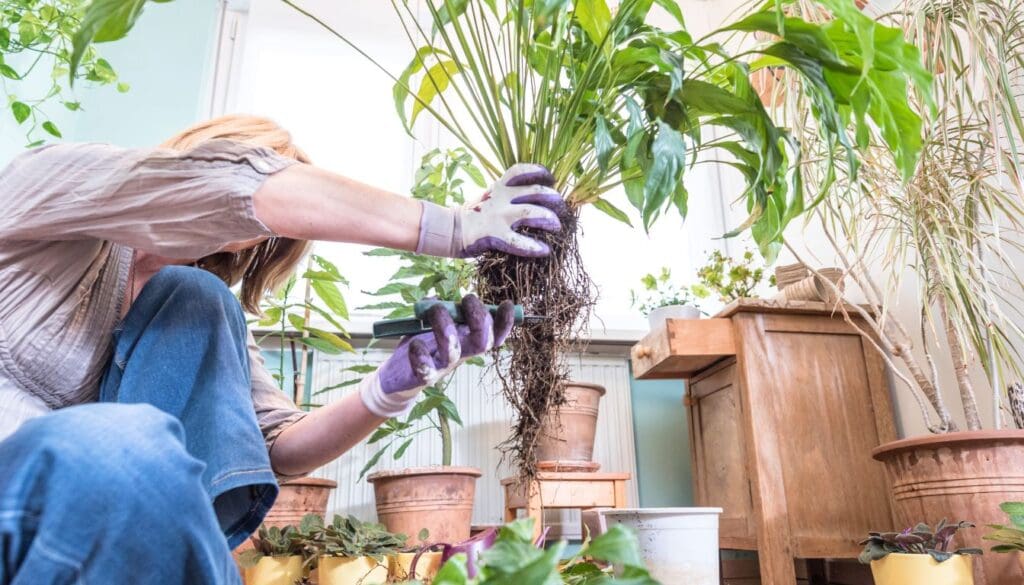
I used to think a big fall haircut would make my plants stronger. But honestly, too much pruning before winter just makes things tougher for them.
When I chop off a lot in fall, I’m actually removing branches that help shield the plant from cold wind and frost. Whoops. Turns out, those scraggly bits are kind of important.
Pruning triggers new growth, and that’s not great if a cold snap hits. Fresh growth is soft and just can’t handle a freeze. I’ve found it’s way better to wait until late winter or early spring for the big cutbacks.
Now, I just snip off anything dead, damaged, or obviously sick. I resist the urge to shape or tidy too much. That way, my plants get to keep their natural protection through winter.
If I want my garden to look less messy, I just pick up dropped leaves or faded flowers instead of hacking away at healthy parts. It’s a simple fix that doesn’t mess with my plants’ survival. Less pruning in fall really does mean stronger plants next spring.
3) Don’t forget to clean fallen leaves to prevent mold and pests
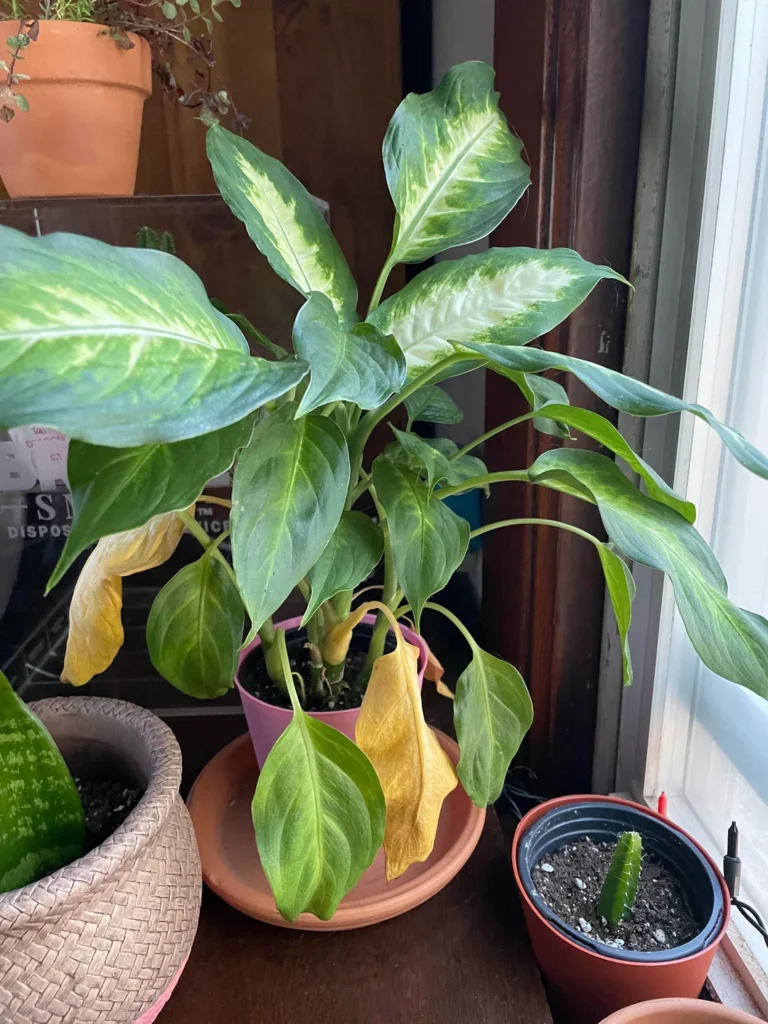
I always try to clear fallen leaves from my garden once fall hits. If they pile up, it’s like rolling out the welcome mat for mold and pests—not exactly what I want.
Wet leaves keep the ground damp, and that brings in slugs and snails. I’ve caught sneaky pests hiding under soggy piles, munching away at roots and stems. Keeping things tidy helps keep all that in check.
Mold is another issue. A thick layer of leaves just traps moisture and lets mold thrive. Some types can even spread to my plants and make them sick. I’ve found it’s way easier to stop mold before it starts by raking up leaves regularly.
Usually, I just use a small rake or my hands to grab leaves around my plants. I toss them in the compost or a yard waste bin, far from my garden beds. It keeps things neat and cuts down on places for pests to hide.
Clean beds mean fewer hiding spots for bugs. Fallen leaves can get out of hand fast in fall, so I try to check things over every week or so. These tiny habits really do help my plants make it through the season.
When my plants go into winter healthy, they’re way more likely to bounce back in spring. A tidy garden is honestly one of the best defenses against plant problems.
I try to make cleaning up part of my fall weekend routine. It doesn’t take long, and it saves me headaches later. Plus, it just looks better.
Understanding Fall Plant Care
I always notice my plants changing as the days get shorter and the nights get chilly. Figuring out how the weather—and my own habits—affect them is kind of the key.
How Seasonal Changes Affect Plants
Once fall shows up, the weather cools and daylight drops. My plants start to slow down or get ready to rest for winter. Some lose their leaves, others just stop growing much.
Cooler soil means roots work slower, soaking up less water and nutrients. If I water like it’s still July, the soil turns soggy and roots can rot. Plants don’t need as much fertilizer or water now. Indoor plants can get a bit droopy or sluggish with less light, too.
So, I have to change things up. I keep an eye out for signs of stress and tweak my care so my plants don’t struggle through the cold months.
Common Fall Gardening Mistakes

A big one? Watering too much. Overwatering in fall just leads to soggy soil and root rot. I always check with my finger and only water if things feel dry.
Fertilizing year-round is another trap. In fall, most plants just don’t need the extra boost. Overdoing it can actually hurt roots or cause weak, floppy growth.
Pruning at the wrong time is a classic mistake. Heavy fall pruning encourages new growth that’s super vulnerable to cold. I stick to removing only dead or damaged bits and save the big cuts for late winter or spring.
And then there’s ignoring fallen leaves. Wet, rotting leaves are basically a pest and disease magnet, so I make sure to rake them up. These small habits really do keep my plants healthier all season long.
Creating a Healthy Fall Environment
I want my plants to hold up as the seasons shift. Cooler temps and shorter days mean I’ve got to change how I care for them. It’s not complicated, but it matters.
Adapting Watering Schedules
When fall hits, I slow down on watering. Soil just takes longer to dry out in cool air, and extra water can cause root rot before you know it. If I stick to summer habits, things can go south quick.
- I always check the soil with my finger—simple but effective.
- If the top inch is dry, that’s when I water.
- I try not to let pots get swampy.
I also watch out for rain soaking my outdoor plants. Less sun means slower water use. Keeping an eye on the forecast helps me avoid mistakes.
Adjusting Fertilizer Use in Cooler Months
Fertilizing in fall isn’t the same as in spring or summer. Growth slows way down, so extra fertilizer can just build up and cause problems. I usually cut back on feeding once things cool off.
Here’s what I do:
- I pick a balanced or low-nitrogen fertilizer if I use any at all.
- I space out feedings to maybe once a month, or just pause until spring.
High-nitrogen stuff can cause floppy, weak stems when there isn’t enough light. I always read the label and never go overboard. Giving my plants a break helps them rest up for next season.
Frequently Asked Questions
When fall comes, I watch my watering, hold back on pruning, and keep leaves cleaned up to keep pests away. These little steps really help my plants manage the colder months.
What are common mistakes to avoid when preparing perennials for fall?
I try not to overwater my perennials since they need less as things cool off. I also skip heavy pruning so they can get ready for winter. Leaving dead leaves around is just asking for trouble, so I clean them up.
Should I trim back my plants during fall cleanup?
I avoid trimming too much or too late in fall. Cutting back hard makes it harder for plants to get winter-ready. I just remove dead or damaged stuff and leave the healthy stems so they can toughen up.
How can I protect my outdoor potted plants from winter cold?
To keep outdoor potted plants safe, I move them closer to the house or into a garage if I can. Wrapping pots in burlap or blankets helps protect roots from freezing. Bubble wrap works too if you’ve got some lying around.
What steps should be taken to winterize a vegetable garden?
After the last harvest, I pull out old plants and weeds from the veggie beds. That way, bugs and diseases have nowhere to hide for winter. A thin layer of mulch keeps the soil and any overwintering crops safe.
Are there any tips to keep indoor plants warm during the colder months?
I move indoor plants away from drafty windows and doors. I try to give them as much light as possible, but keep them away from heaters. Sometimes I’ll shift them to a sunnier spot just to help them out a bit.
What should be removed from a fall garden to ensure plant health?
I usually clear out fallen leaves, dead branches, and any old plants before winter rolls in. It just seems to help with mold and pests that might otherwise stick around and cause trouble next year.
Honestly, a tidy garden now can make spring a whole lot easier.
Recommended Garden Supplies
| Product Image | Our Recommended Gardening Supplies | Check Offers! |
|---|---|---|
Top Top
Top
Top
Top
Top
Top
Top
Top | rePotme Houseplant and Tropical Classic Potting Soil Mix | Check Offer On Amazon |
 Top
Top
Top
Top
Top
Top
Top
Top | Espoma Organic Indoor Plant Food | Check Offer On Amazon |
 Top
Top
Top
Top
Top
Top
Top
Top | GooingTop LED Grow Light 6000K Full Spectrum Clip Plant Growing Lamp | Check Offer On Amazon |
 Top
Top
Top
Top
Top
Top
Top
Top | Soil Moisture Meter | Check Offer On Amazon |
 Top
Top
Top
Top
Top
Top
Top
Top | Govee Hygrometer Thermometer, Bluetooth Enabled! | Check Offer On Amazon |
 Top
Top | LEVOIT Humidifiers for Large Room(Best For Plants) | Check Offer On Amazon |
 Top
Top
Top
Top
Top
Top
Top
Top | Upgraded DIY Automatic Drip Irrigation Kit, 15 Potted Houseplants Support | Check Offer On Amazon |
 Top
Top
Top
Top
Top
Top
Top
Top | Stainless Steel Heavy Duty Gardening Tool Set | Check Offer On Amazon |
 Top
Top
Top
Top
Top
Top
Top
Top | Bonide Insecticidal Soap | Check Offer On Amazon |
 Top
Top
Top
Top
Top
Top
Top
Top | Bonide 32 oz Spray Neem Oil for Organic Gardening | Check Offer On Amazon |
 Top
Top
Top
Top
Top
Top
Top
Top | Garden Safe Fungicide | Check Offer On Amazon |




